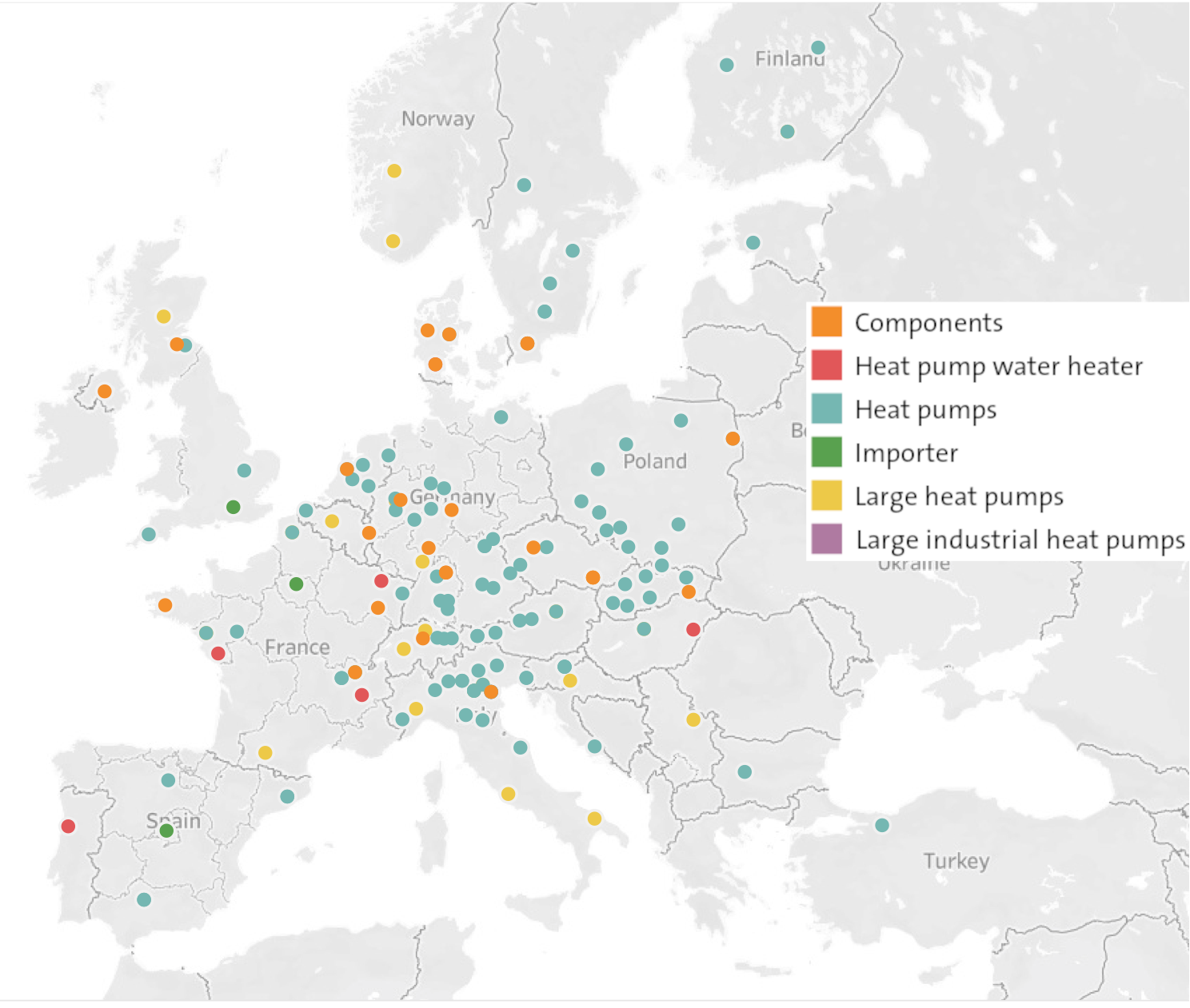Heat pumps provide comfort in space and water heating, and with superior efficiency. But collectively, all installed heat pumps have more beneficial effects: First, the industry is a big contributor of labour, as the products and its components have to be manufactured, installed and maintained. Second, due to its efficiency, the stock of heat pumps produces renewable energy, saves energy consumption and avoids greenhouse gas emissions. In this section these benefits are quantified and presented.
An economic force and a provider of local labour: the European heat pump industry
The European manufactures of heat pumps and components are world leaders in this technology. Not least because manufacturers are now offering integrated solutions equipped with interfaces, thus providing ever-increased efficiency catering to nearly all application fields. Based on the average sales prices of the different systems, the total value of the 2021 market volume is almost 14.46 billion (incl. VAT). Based on the different average costs per system, the turnover shares per type split up as follows: Heating-only air/water heat pumps represent 36%, reversible air/air with heating function 27% and heating-only ground/water systems 16% of total turnover. The rest is comprised of reversible air/water (15%), sanitary hot water heat pumps (5%) and exhaust air (1%). Based on the national VAT rates, this indicates total VAT generated by heat pump sales of approx. 1.77 billion Euros.
From a labour perspective, the heat pump sector employs a well-educated work force in the areas of R&D, components and heat pump manufacturing, installers (including drillers) and service & maintenance. Based on the number of working hours needed to install the different types of heat pumps and based on expert estimates on turn-over per employee, the total number of employees in the European heat pump industry is estimated 116 679 persons, approx. 37% of these being active in heat pump manufacturing.
Europe is still a stronghold in heat pump manufacturing. Both heat pumps and components are developed and manufactured on the continent. The industry is quite divers and often still constitutes of small and medium sized companies.
Over the past years, a few much larger companies have developed, but none of them is dominating the whole European market. Interestingly, heat pump manufacturing is often taking place in less densely populated areas of Europe, providing employment and perspective to rural communities.

How much green energy did heat pumps provide in 2021?
All heat pumps that were sold and installed in 2021 provided 19.83 TWh of renewable heat. The heat pump stock, which includes all units that were sold and installed in the last 20 years, contributed 179.2 TWh of green energy in 2021 (Chart 3.3-2). For comparison: The 2021 RES target for heating and cooling is 1296.7 TWh in absolute terms. Hence, heat pumps already deliver 11% of the target (Source: European Commission, EU energy trends to 2030 (update 2009), p.66.).

How much energy was saved in 2021 by using heat pumps?
Comparing the energy demand of heat pumps with the best available alternative – gas condensing boilers – would lead to an increase in energy demand. All heat pumps installed in 2021 have saved 25.44 of final and 10.97 TWh of primary energy. The stock of heat pump units in operation across Europe by 2021 saved 229.1 TWh of final and 103.4 TWh of primary energy (Chart 3.3-3). The overall EU 2021 target for final energy savings is 3 966 TWh (including all sectors, i.e. also transport and electricity).

How much CO2 emissions were avoided in 2021?
The comparison of the same scenarios as above yields the emission savings given the use of heat pumps. Generating energy from fossil fuels creates CO2 emissions. Hence, if heat pumps can save energy, they also save emissions. Based on the sales volume 2021, 5.06 Mt of CO2 emissions were avoided. The whole stock of installed heat pumps saved 45.90 Mt of CO2 emissions (Chart 3.3-4). This is about 4.6% of the overall absolute EU 2021 target for GHG emission reduction (806 Mt).

